Parish councils in England
A parish council is a civil local authority found in England and is the lowest tier of local government.[1] They are elected corporate bodies, have variable tax raising powers, and are responsible for areas known as civil parishes, serving in total 16 million people. A parish council may decide to call itself a Town Council (if the parish covers a town) Village Council, Community Council, Neighbourhood Council, or if the parish has city status, the parish council may call itself a City Council. However the powers and duties of the parish council are the same whatever name it carries.[2]
Civil parish councils were formed in England under the reforming Local Government Act 1894 to take over local oversight of civic duties in rural towns and villages from the vestry committee.
Parish and town councils vary enormously in size, activities and circumstances, representing populations ranging from less than 100 (small rural hamlets) to up to 100,000 (Sutton Coldfield Town Council). Most of them are small: around 80% represent populations of less than 2,500[3] ; and two thirds spend under £25,000 per year.
Overview
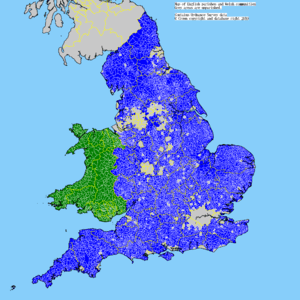
There are 9,000 parish and town councils in England. Over 16 million people live in communities served by these local councils, which is around 25% of the population, and about 80,000 councillors serve on these councils. It is calculated £1 billion is invested in these communities every year.[4]
Their activities fall into three main categories: representing the local community, delivering services to meet local needs, and improving quality of life and community well being.[5]
Not every civil parish has a parish council: smaller ones—typically those with an electorate of fewer than 200—have parish meetings instead. A parish with a small number of electors may share a council with one or more neighbouring parishes; such an arrangement is known as a grouped parish council, or sometimes as a joint parish council, common parish council or combined parish council.
Parish councils are funded by levying a "precept" collected from within the council tax paid by the residents of the parish. Parish councils are made up of unpaid councillors who are elected to serve for four years. A casual vacancy may be filled by by-election or co-option.
Powers and duties
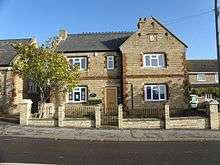
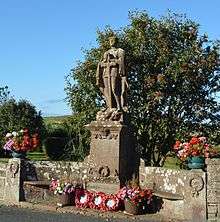
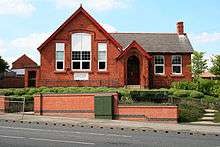
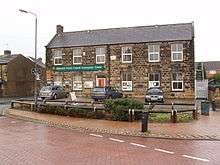
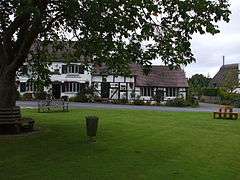

Parish councils have the power to tax their residents to support their operations and to carry out local projects. Although there is no limit to the amount that can be raised, the money can only be raised for a limited number of purposes, defined in the 1894 Act and subsequent legislation. The "General Power of Competence" is a power awarded in 2012 to eligible councils. There are large variations in the size, resources and abilities of parish councils, and a correspondingly large variation in the services they provide, as such there are only a limited number of duties which they are legally obliged to fulfil, but a more extensive range of powers which they can exercise at their discretion.[6]
Duty to provide facilities
- Allotments - Duty to consider providing allotment gardens if demand unsatisfied.[7]
Powers to provide facilities
Parish councils have powers to provide, maintain and manage some facilities themselves, or they can contribute towards their provision by others. There are large variations in the facilities provided by parishes, but they can include the following:[8][9]
- Village halls, town halls, or community centres
- Recreational facilities such as recreation grounds, parks, children's play areas, playing fields, and swimming baths
- Conference facilities
- Cemeteries and crematoria
- Maintenance of closed churchyards
- Litter bins
- Public seats
- Public toilets
- Public clocks
- Cycle and motorcycle parking
- Maintenance of rights of way
- Guardianship of common land (such as village greens)
- Maintenance of war memorials
They may also provide the following, subject to the consent of the county council or unitary authority of the area in which they lie:[8][9]
- Bus shelters
- Lighting of roads and public places
- Off-street car parks
- Certain traffic signs and other public notices
- Provision, maintenance and protection of roadside verges
- Establishment or acquisition of markets, and provision of market places and market buildings
Consultative powers
Parish councils have the right to be consulted by the district, county council or unitary authority on:[8][9]
- All planning applications in their areas
- Intention to provide a burial ground in the parish
- Proposals to carry out sewerage works
- Footpath and bridleway (more generally, 'rights of way') surveys
- Intention to make byelaws in relation to hackney carriages, music and dancing, promenades, sea shore and street naming
- The appointment of governors of primary schools
Miscellaneous powers
Parish councils may also exercise the following powers:[8][9]
- Support and encouragement of arts and crafts
- Encouragement of tourism
- Providing grants to local voluntary organisations
- Sponsoring public events
- Funding crime prevention measures
- Funding community transport schemes
- Contribution of money towards traffic calming schemes
- Cleaning and drainage of ponds, watercourses and ditches
- Power to obtain water from any well, spring or stream
- Creation of a neighbourhood plan
- Power to acquire or dispose of land
- Withholding of consent to stop up unclassified highways and footpaths
- Appointing trustees of local charities
- Power to make certain byelaws
General power of competence
Under the Localism Act 2011 eligible parish councils can be granted a "general power of competence" which allows them within certain limits the freedom to do anything an individual can do provided it is not prohibited by other legislation, as opposed to being limited to the powers explicitly granted to them by law.[10] To be eligible for this a parish council must meet certain conditions, such as at least two-thirds of the councillors being elected as opposed to being co-opted or appointed, and having a clerk with suitable qualifications.[11]
Meetings
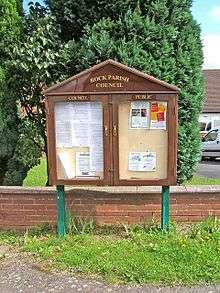
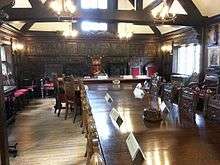
The central function of the Council, the making of local decisions and policy relevant to the public interest of the parish, is performed at the meetings of the Council. A Parish Council must hold an annual meeting and at least three other meetings in a year; however monthly meetings are the most common, and some larger councils have fortnightly meetings. An extraordinary meeting may be called at any time by the chairman or members, but due notice must be given.
A Council can form committees with delegated powers for specific purposes; however these must adhere to the protocols for public attendance, minute-taking and notice of meetings that apply to the main Council. A committee may form sub-committees. A Council can also appoint advisory groups which are exempt from these constraints to give flexibility, but these have no delegated powers and cannot make financial decisions. Such groups may contain members who are not councillors.
A Parish Council consists of the chairman and not fewer than five elected Parish councillors, and a quorum of the main council committee is at least one-third of the members, or three members, whichever is the greater. Every meeting is open to the public, who are encouraged to attend, except for those items where the Council formally resolves to exclude the public and press on the grounds that publicity would be prejudicial to the public interest. This would have to be due to the confidential nature of the business. This latter also applies to any sub-committee of the Parish Council.
Notice of meetings must be given at least three clear days[note 1] before and be displayed in a "noticeable place" in the Parish, giving time, date and venue. A summons to attend the meeting is also issued, specifying the agenda, to every member of the Council. Items not on the agenda cannot be formally debated or resolved. Items brought up by the attendance of the general public or in correspondence can be discussed,[12] but formal resolutions on these must be deferred to the next meeting so that due notice can be given.[13]
The minutes of the meeting are taken by the clerk, and are ratified at the next meeting of the council. They must also be displayed in a noticeable place in the parish, and for many councils, they are now also displayed on the internet.
Procedures for the conduct of meetings are set out in Schedule 12 of the Local Government Act 1972, and where this is not overridden by legislation, by the standing orders of the Council. Most adopt the National Association of Local Councils (NALC) model standing orders.
Councillors are expected to adhere to the "Nolan principles" of conduct in public life [14]
Administration
The administration of the Council is managed by the Parish Clerk, who is a paid employee acting in a combined statutory role as secretary and treasurer of the council. They may be full-time or part-time, depending on the amount of council business, and large Parish Councils may require more than one official for these tasks, in which case they are a group led by the Clerk.
The necessary financial monitoring and reporting are the clerk’s responsibility, and in this role the clerk is known as the “Responsible Financial Officer” (RFO) of the Council. The clerk is also the "Proper Officer" of the Council. They "enact" (cause to happen) the decisions of the Council, and they receive official correspondence and issue correspondence on the instructions of the Council. The clerk also prepares agendas for meetings of the Council and its committees, gives notice of these to the Council members and the public, and records and publishes the minutes of these meetings. They are the formal point of contact with the public, and are a source of information for the public about the Council’s activities.
The clerk also provides procedural guidance for the Council itself, and ensures that statutory and other provisions governing or affecting the running of the Council are observed. Clerks are encouraged to have a formal qualification, such as the Certificate in Local Council Administration (CiLCA).
The Clerk may not be a member of the Council.[15]
Elections and membership
The term of office of a parish councillor is four years, and council seats are elected en bloc through First past the post system like some other UK elections by secret ballot. The legislation provides that the number of elected members of a parish council shall not be less than five. Larger parishes may be divided into parish wards, with separate elections for each ward.[16]
The timing of the election cycle is usually linked to that of the election of a district councillor for the ward containing the parish.[17] Where the elections to a district council are delayed or cancelled (e.g due to its abolishment with the formation of a unitary council or a change from elections by thirds to the whole council), the term of a parish council may be extended to match the next elections to the new authority.
A candidate must be at least one of the following:
- A UK or Commonwealth citizen
- Citizen of the Republic of Ireland
- Citizen of another member state of the European Union
and candidates must state on their consent for nomination form their qualification for election, which must be at least one of the following:
- they are an elector of the parish
- during the whole of the last 12 months they have occupied, either as owner or tenant, land or other premises in the parish.
- their principal or only place of work is in the parish
- they live within 4.8 kilometres (3 miles) of the parish boundary[18]
The chairman of the last council shall remain in office, even if not elected to the newly constituted council, until a new chairman is appointed at the first meeting of the new council.[17][19]
Uncontested elections
Where there are an equal number or fewer candidates than there are vacancies, all candidates are elected unopposed, and no poll is taken.[17] Where there are fewer candidates than vacant seats, the parish council has the power to coopt any person or persons to fill the vacancies. This power, however, may only be exercised if there is a quorum of councillors present and within 35 days of the election.
If the parish council fails to fill the vacancies within this period, the district council may dissolve it and order fresh elections. If there is not a quorum elected the district council must dissolve it and order fresh elections. [17][19]
Contested elections
Where there are more candidates than vacancies, a poll must be held. Undivided parishes, or multi-member parish wards, hold elections under the bloc vote system.[17]
Casual vacancies
If a vacancy occurs during the term of a parish council, it may be filled by either election or co-option. Elections only occur if, following the advertisement of the vacancy for 14 days, 10 electors send a written request to the returning officer. If no request is received, the parish council will be required to fill the vacancies by co-option. If vacancy occurs within 6 months of a scheduled election, then a by-election cannot be called, but the council has the power to co-opt. The nomination qualifications required of a candidate for co-option are the same as for those for election.[17]
If the number of vacancies on the parish council is such that there is no longer a quorum, the district council may temporarily appoint persons to bring the council up to strength in the interval prior to an election.[17]
History
Civil parish councils were formed in England under the reforming Local Government Act 1894 to take over local oversight of civic duties in rural towns and villages. The act created two new types of local authority, parish councils and district councils, to rationalise the large number of bodies which existed for a variety of activities such as public health, secular burials, water supply and drainage. It also finally removed secular duties from the local vestry committees and gave them to the new parish councils.
An idea of the scope of this huge re-organisation can be gained from the words of H H Fowler , President of the Local Government Board, who said in the parliamentary debate for the 1894 Act:
"62 counties, 302 Municipal Boroughs, 31 Improvement Act Districts, 688 Local Government Districts, 574 Rural Sanitary Districts, 58 Port Sanitary Districts, 2,302 School Board Districts ... 1,052 Burial Board Districts, 648 Poor Law Unions, 13,775 Ecclesiastical Parishes, and nearly 15,000 Civil Parishes. The total number of Authorities which tax the English ratepayers is between 28,000 and 29,000. Not only are we exposed to this multiplicity of authority and this confusion of rating power, but the qualification, tenure, and mode of election of members of these Authorities differ in different cases."[20]
The government chose the civil parish as the basic unit of local government in rural areas. Each parish council's area of responsibility was a geographical area known as a civil parish. The civil parishes were also grouped to form rural districts, which became the geographical areas of rural district councils. Civil geographical parishes continued to exist in urban districts, but did not have parish councils.
Whilst the bulk of the rationalised activities went to district councils, parish councils took over a number of lesser powers including all the secular activities of the parish Vestry committee; a system of local government based on ecclesiastical parishes that originated in the feudal system.
Modern development
Two principal Acts of Parliament have increased the general powers of parish councils, and removed onerous constraints.
Local Government Act 1972
The Redcliffe-Maud Report led to the Local Government Act 1972, which dramatically re-organised local government with amalgamation of district councils, large-scale changes to county boundaries and creation of metropolitan areas. However, the parish council was retained as the "grass roots" tier of local democracy for rural areas. In addition, many small towns which had previously formed municipal boroughs or urban districts became "successor parishes" within larger districts. The Act also recognised the role of parish councils in development planning in their parish, and gave them the right to be informed and consulted on applications for such development. However, the original proposal to grant a general power of competence to councils was not carried through, and the doctrine of ultra vires remained. This meant that parish councils could not do anything outside their statutory powers.[21]
Localism Act 2011
It was not until the Localism Act 2011 [22] that parish councils were freed of the constraints of ultra vires which limited the activities of parish councils to only those things for which they had been given statutory powers, and were given a radical new power: to 'do anything that individuals generally may do' as long as that is not limited by some other Act. This is known as the General Power of Competence (GPC), and is available to "eligible" parish councils. An eligible council is one which has resolved to adopt the GPC, with at least two-thirds of its members being declared elected, rather than co-opted, and the Clerk must hold an appropriate qualification.[23] However the precept may not be raised for purposes which rely only on the power of the GPC, and such funding must be obtained from other sources.[24]
The Localism Act also introduced new rights and powers to allow local communities to shape new development by coming together to prepare neighbourhood plans. Neighbourhood planning can be taken forward by two types of body: town and parish councils or 'neighbourhood forums'. Neighbourhood forums are community groups that are designated to take forward neighbourhood planning in areas without parishes. It is the role of the local planning authority to agree who should be the neighbourhood forum for the neighbourhood area.
Neighbourhood forums and parish councils can use new neighbourhood planning powers to establish general planning policies for the development and use of land in a neighbourhood. These are described legally as 'neighbourhood development plans'. In an important change to the planning system, communities can use neighbourhood planning to permit the development they want to see - in full or in outline – without the need for planning applications. These are called 'neighbourhood development orders'.[25]
Alternative styles
In 1974, at the same time as the creation of successor parishes, the law was changed so that any parish council could pass a resolution to declare its area a "town", with the council known as a "town council". The majority of successor parishes, and a number of other small market towns now have town councils, whose powers are exactly the same as those of parish councils, although their chairmen are entitled to style themselves as "town mayor".[8] Similarly, a handful of parishes have been granted city status by letters patent: the council of such a parish is known as "city council" and the chairman is entitled to be known as the "city mayor".[8]
In England, there are currently eight parishes with city status, all places with long-established Anglican cathedrals: Chichester, Ely, Hereford, Lichfield, Ripon, Salisbury, Truro and Wells.
Following the enactment of the Local Government and Public Involvement in Health Act 2007, a parish council has been able to alternatively style itself as a "village council", "neighbourhood council" or "community council". A provision of this Act is that is that civil parishes may now be established in the London boroughs.[26]
Creation, alteration and abolition of councils
Since the enactment of the Local Government and Rating Act 1997, district and unitary councils may create a parish council for a new civil parish either through a review or in response to a petition. This has led to the creation of new parish councils at an increased rate, especially in large towns and cities which do not have a history of parish governance.[1]
Since 13 February 2008 the power to create new parishes and parish councils, to alter parish boundaries, to dissolve parish councils and to abolish parishes has been devolved to district, unitary and London Borough councils (collectively known as "principal councils"). This process is known as a "community governance review".[3]
Principal councils have the power to make a community governance review at any time for all or part of their district. It is envisaged that such reviews will occur at intervals of between 10 and 15 years, and will take into account population changes, the need for well-defined boundaries and the wishes of local inhabitants. Reviews may also be triggered by a petition of local government electors for an area. A petition is deemed valid where it is signed by a sufficient proportion of the electorate (ranging from 50% in an area with fewer than 500 electors to 10% in one with more than 2,500).[3] The sufficient proportion of the electorate necessary in areas with more than 2,500 electors was reduced from 10% to 7.5% under an amendment to the Act made in 2015.[27] At the end of the review process, which must be completed within 12 months, the principal council is empowered to issue a reorganisation order setting out the changes. This order may:[3]
- Create a new parish
- From all or part of an unparished area
- By the division of an existing parish or parishes
- By the merger of all or parts of existing parishes
- Alter the boundaries of existing parishes
- Group or ungroup parishes
- Give a name to a new parish
- Abolish an existing parish and dissolve its parish council
In order to abolish an existing parish council, the principal council must provide evidence that this in response to "justified, clear and sustained local support" from the area's inhabitants.[3] Where a new parish is formed with 1,000 electors or more, a parish council must be formed. Where there are between 151 and 999 electors the principal council may recommend the establishment of either a parish council or parish meeting. Where there are 150 electors or fewer a parish council may not be formed.[3]
Reviews come into effect on 1 April in the year following the date the reorganisation order is made. Where a new parish council is created, elections to the new body will be held at the time of next council elections. In the intervening period the principal council appoint the parish council from among their own membership.[3]
Notes
- (LGA 1972 Part 2s10(2)). Legal definition of 3 clear days. The day on which the notice was issued or posted, the day of the meeting, a Sunday, a day of the Christmas break or a bank holiday or a day appointed for public thanks giving or mourning shall not count towards the 3 clear days.
References
- "Create a Council: Background". National Association of Local Councils. Archived from the original on 2011-09-19.
- Local Government and Public Involvement in Health Act 2007
- Guidance on Community Governance Reviews (PDF). London: Department for Communities and Local Government. 2010. ISBN 978-1-4098-2421-3. Archived (PDF) from the original on 2010-12-01. Retrieved 2010-09-11.
- NALC website. "About Parish Councils". Retrieved 1 August 2017.
- NALC Website October 2014
- LOWE, J (2014). A Survivor's Travel Guide to Parish Councils. Earthscape Publishing. ISBN 978-0-9929988-1-3.
- Smallholdings & Allotments Act 1908, s.23
- Local government in England and Wales: A Guide to the New System. London: HMSO. 1974. pp. 12–13, 157–158. ISBN 0-11-750847-0.
- "Legal Powers and Duties" (PDF). Cumbria Association of Local Councils. Retrieved 4 July 2020.
- "The General Power of Competence" (PDF). Local government Association. Retrieved 10 November 2018.
- "The Parish Councils (General Power of Competence) (Prescribed Conditions) Order 2012". legislation.gov.uk. Retrieved 10 November 2018.
- sect 12 Local Government Act 1972
- (Longfield Parish Council v Wright). A council must specify on such notice all items of business proposed to be transacted at the meeting; a council cannot lawfully decide any matter which is not specified in the summons (Agenda).
- Leopold, Patricia (2004). "Standards of Conduct in Public Life". In Jowell, Jeffrey; Oliver, Dawn. The Changing Constitution (5 ed.). Oxford University Press. ISBN 0-19-926439-2.
- Governance Toolkit for Parish & Town Councils - 2009. SLCC, NALC and ACSS
- "Local Government Act 1972 (c.70) s.16". Statute Database. Office of Public Sector Information. Archived from the original on 28 November 2012. Retrieved 29 August 2010.
- "Parish Council Elections. A Guide to Election Procedures" (PDF). South Norfolk Council. 2007. Archived from the original (PDF) on 2011-06-13. Retrieved 29 August 2010.
- Parish Council elections - guidance for candidates and agents - The electoral Commission
- "Representation of the People Act 1985 (c. 50) s.21". Statute Database. Office of Public Sector Information. Retrieved 29 August 2010.
- "Local Government of England and Wales Bill". Hansard 1803 - 2005. Parliament of the United Kingdom. 21 March 1893. Retrieved 2009-02-18.
- Parish Government 1894-1994 KP Poole, B Keith-Lucas NALC 1994
- Lowe, J (2014). A Survivor's Travel Guide to Parish Councils. Earthscape Publishing. ISBN 978-0-9929988-1-3.
- (Parish Councils (General Power of Competence) (Prescribed Conditions) Order 2012)
- Local Government Association - "The General Power of Competence - Empowering councils to make a difference" L13-563 Jul 2013
- UK Government planning portal - "Neighbourhood planning"
- Local Government and Public Involvement in Health Act 2007
- https://www.gov.uk/government/news/making-it-easier-for-communities-to-set-up-new-town-and-parish-councils
See also
- List of civil parishes in England
- Civil parishes in Scotland
- Charles Arnold-Baker noted writer on local council law and procedure.